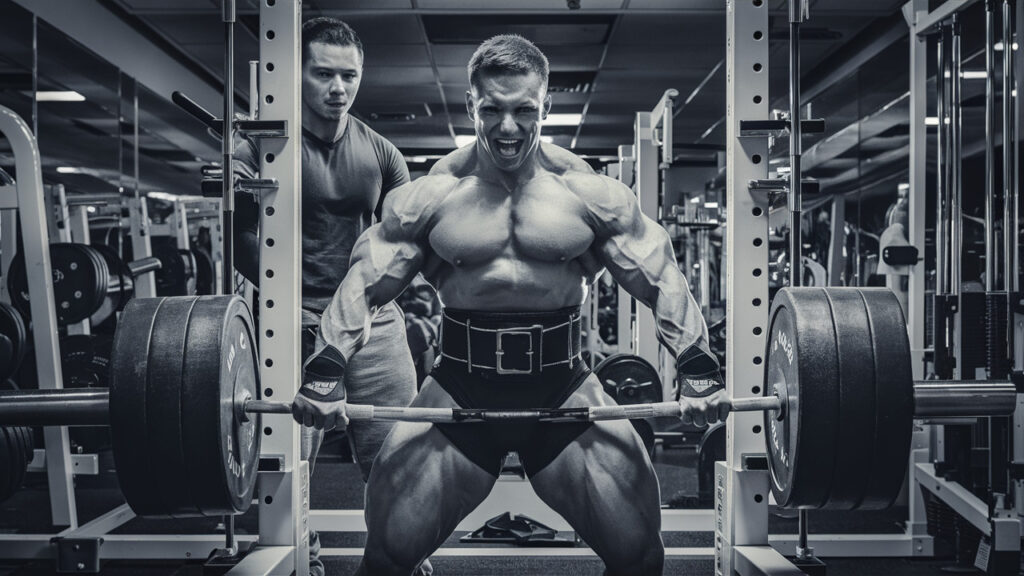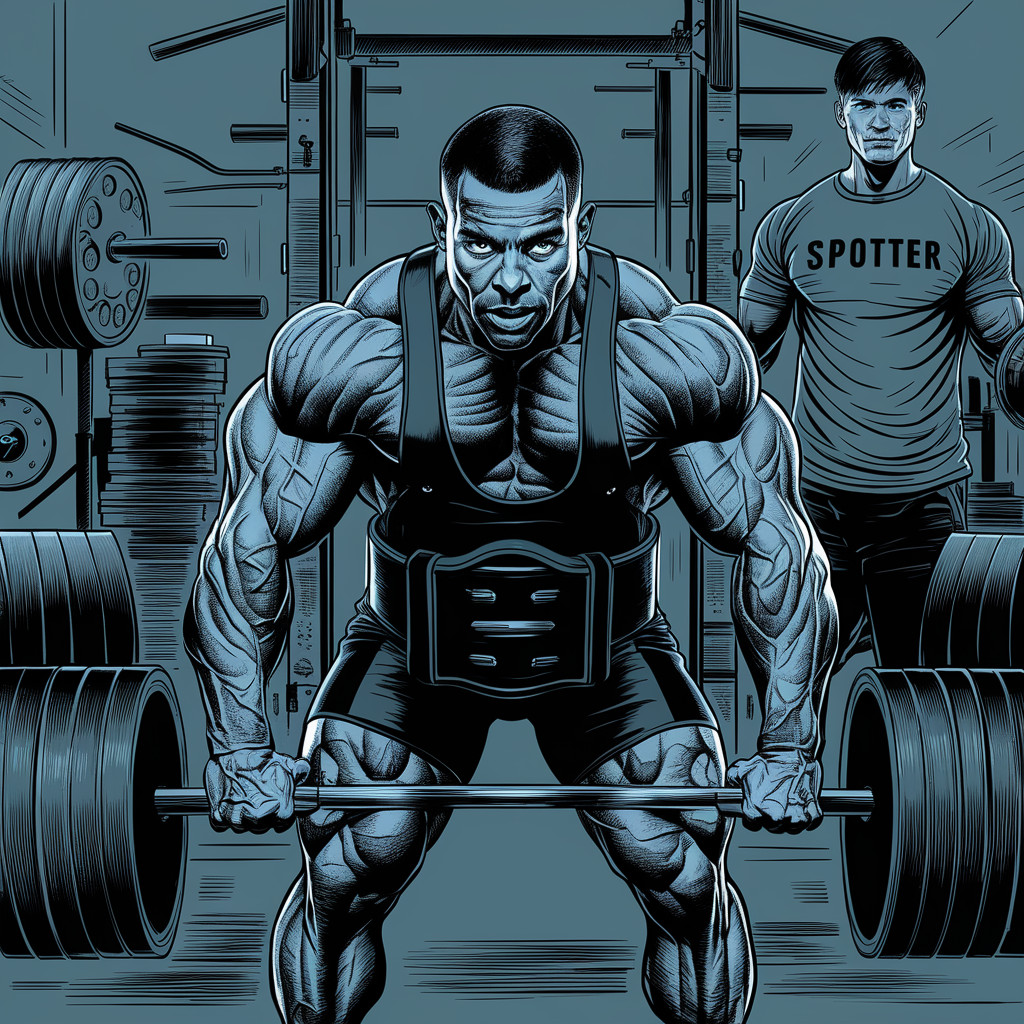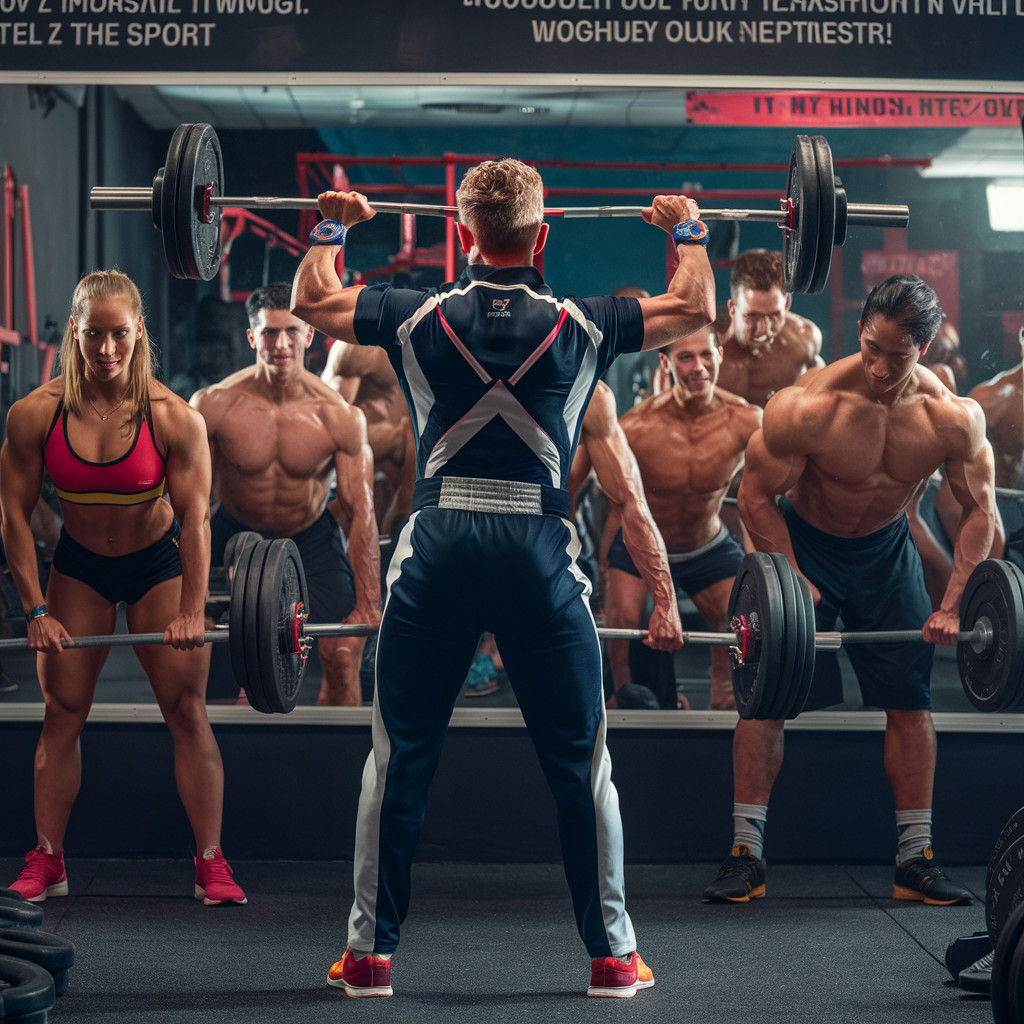Your Path to Success: Recognizing Common Bodybuilding Errors
Discover common bodybuilding errors to enhance your gains, prevent injuries, and boost your gym performance!

Avoiding Weightlifting Injuries
Getting pumped with weightlifting can be an awesome way to build strength and boost fitness. But, if you’re not careful, it might also leave you with some nagging injuries. Knowing where injuries tend to strike and why can help gym enthusiasts dodge these pesky problems.
Common Sites of Injury
Muscle strains are like the popcorn of weightlifting injuries—they pop up everywhere, often because of overdoing it or taking an unexpected hit. Here’s where they love to make their presence known:
| Part of the Body | How Often Injured? |
|---|---|
| Back | A lot |
| Shoulder | A lot |
| Knee | A lot |
| Meniscus Tears | Pretty often |
| Patellar Tendon Tears | Pretty often |
| Achilles Tendon Rupture | Not too much |
Big, serious injuries, like a torn meniscus or Achilles, usually lurk around heavy lifting. So, keeping them in mind while chasing those fitness milestones is key. For more details on this, hop over to Houston Methodist.
Causes of Weightlifting Injuries
Injuries sneak up on weightlifters for all sorts of reasons. Here are some usual suspects:
- Messy Techniques: When lifters get sloppy with their form, it’s a recipe for strain and pain—especially newbies who mimic seasoned lifters without getting the basics down (NCBI).
- Biting Off Too Much Weight: Eager beavers who pile on more weight than they can manage often end up stretched out and bruised, pushed along by peer pressure or wanting to bulk up fast.
- Forgetting to Breathe: Holding in your breath during a lift is a classic goof-up. Breathing like a boss means more oxygen for muscles and keeping your zen (Les Mills).
- Piling on the Tension: Whether by brute force or just strain over time, excessive tension on muscles and tendons can lead you to injury-ville, especially during big-boy lifts like squats and deadlifts.
To steer clear of those painful pitfalls, nailing the right form and knowing how much you can handle goes a long way. Staying in the loop about weightlifting misconceptions, weightlifting technique mistakes, and bodybuilding form errors can be the icing on the cake for reaching those fitness goals without a hitch.
Preventing Weightlifting Injuries
Weightlifting injuries are like speed bumps on your highway to fitness greatness. Nobody enjoys hitting them, and they sure slow you down. But, with a few simple tweaks to your routine, you can keep those injuries at bay while making your muscles pop. Let’s dig into how to lift smart and safe.
Importance of Proper Form
There’s no MVP award for bad posture. Proper form is your unsung hero in the gym, silently protecting your joints and muscles. If you’re not sure how to lift, don’t wing it—get it right from the get-go. Copying that dude benching 300 pounds without knowing the basics? Trust me, not a good plan. Learn to lift correctly to keep strains and sprains far away.
Some common trip-ups include:
- Lifting with a hunchback
- Letting knees wobble during squats
- Forgetting to engage your core
Start with our guide on bodybuilding form errors to avoid these rookie mistakes. A coach or trainer could also be your new lifting buddy—just make sure they actually know their stuff.
Gradual Load Increase
Rome wasn’t built in a day, and neither are your biceps. Jumping into heavy weights too soon is a recipe for disaster. Small steps are the name of the game here. Increase your weights bit by bit, giving your body a chance to catch up with your enthusiasm.
Here’s a quick guide to staying safe while leveling up:
| Experience Level | Recommended Increase per Session |
|---|---|
| Newbie | 5% of what you can currently lift |
| Semi-Pro | 2.5 – 10% increment |
| Pro | 2.5 – 5% added weight |
Start with light and easy sessions. If you’re hungry for knowledge on weightlifting technique mishaps, learning about load management can keep your gains safe and sound.
Utilizing Safety Measures
Picture this: you’re crushing your workout, but is your safety game strong too? Look around—your surroundings matter as much as your barbell. Use these tricks to stay in one piece:
- Have a buddy watch your back during big lifts
- Sport the right kicks for your weight training sessions
- Keep your gym gear in top shape
And remember, rivalries are for sports, not lifting. Compete with yourself, not the grunting giant next to you. Focus on smashing your own records, and you’ll lift injury-free. For more gems on weightlifting myths busted, digging into the mental side of safe lifting is a win-win.
By fine-tuning your form, moving up the weight rack at a smooth pace, and embracing safety, you’ll dodge those injuries and savor the sweet success of your workouts.

Understanding Overtraining
Overtraining’s a sneaky little gremlin that can mess up your gains if you’re not careful. Spotting the signs, learning to chill, and setting up the right game plan to dodge it are must-haves for anyone who loves picking up heavy things.
Signs of Overtraining
Nipping overtraining in the bud can save you from a whole heap of trouble. Watch out for these telltale signs:
| Thing Going Wrong | What’s Going On |
|---|---|
| Running on Empty | You’re tired as heck, and a nap just won’t cut it. |
| Slow to Come Back | Feels like bouncing back from workouts takes ages. |
| Weak Sauce | Strength or stamina’s tanked for no good reason. |
| Body’s Acting Up | Coughs, colds, or worse seem to be lurking around the corner. |
| Mood Swings | Feeling cranky, on edge, or down in the dumps. |
These issues can crop up from how hard you’re training or even from other life hassles. Keeping an eye on these can help you tweak things before you’re knee-deep in trouble. Check out our piece on weightlifting myths for some more pointers.
Recovery from Overtraining
Bouncing back from overtraining isn’t just important—it’s the name of the game. Here’s the playbook:
- Chill Out: Sometimes, taking a break is just what the doc ordered.
- Food Check: Make sure you’re munching on the right stuff to get back on track.
- Headspace Help: If stress’s got you down, getting support can steer you back on track.
- Get Back in the Groove: Follow a game plan like:
- Halve your workouts for a bit.
- Gently crank up the intensity week by week.
Here’s a tip: talk to the pros (Hospital for Special Surgery)—they know their stuff.
Strategies to Avoid Overtraining
Dodging overtraining is all about smart moves and tuning in to what your body needs. Here’s how to keep your head (and muscles) in the game:
- Mind Your Cues: Listen to what your body’s telling you and tweak your workouts.
- Workout Mind Movies: Think through your workouts before you dive in—it can do wonders.
- Jot it Down: Keeping a record of your sweat sessions can help you see what’s working or not.
- Balance Work and Chill: Rest is just as important as the grind.
- Mix it Up: Try different workouts to keep things fresh and prevent any injuries.
- Eat the Right Stuff: Not just about energy—make sure you’re hydrated too.
- Chillax: Find a piece of zen with stuff like meditation or some yoga.
Look after all parts of yourself and you’ll sail smoother, dodging those pesky overtraining snags. For more on how not to mess up, peek at our guides on weightlifting mistakes, form hiccups, and those nasty weightlifting bad habits that might sneak up on you.
Breathing Techniques in Weightlifting
Getting a grip on breathing in weightlifting is like finding your secret weapon. It’s about pumping up your game and keeping you safe while reaping those gains at the gym.
Why Breathe Right?
Turns out, breathing’s a big deal when you’re throwing those weights around. Oxygen? Yeah, it’s the juice your muscles need to keep you going strong. Pay attention to how you breathe, and you’re one step closer to being the boss of the weights. Chill, steady, and boom—your performance climbs sky high (Les Mills).
How to Breathe While You Lift
Here’s the golden rule when you’re in the lifting zone: Suck in air through your nose, blow it out your mouth. Find your groove by syncing up your breathing with both the “here we go” (muscle-lengthening) and the “push it!” (muscle-shortening) bits of each move. It tunes up your body’s command center and amps up your power (Les Mills).
| Lifting Phase | Breathing Tip |
|---|---|
| Muscle Stretch | Inhale through nose |
| Muscle Squeeze | Exhale through mouth |
Now, for those die-hard lifters, there’s this thing called the Valsalva maneuver—kind of hardcore. You hold your breath to build some serious core power and keep your spine in check. But, word of warning, it can spike your blood pressure—a bit like a pressure cooker about to pop, so that’s risky business with fainting and heart jitters. For the rest of us mere mortals, crunch those abs and let them do the heavy lifting instead of fancy breath-holding tricks (Les Mills).
Breathing Players on Your Performance Team
Good breathing can make lifting feel like you’re starring in a superhero movie. Tighten up that core, and you’re unlocking some serious power. Get smooth with your breathing using lighter weights, and you’re setting up a lasting rhythm. Different breaths, like the Valsalva swagger or reverse breath moves, shape how you lift—case in point, the trusty bench press. Nerdy research shows Valsalva might speed up your reps, while others like lung packing make the lift a long, slow burn (PubMed Central). Knowing this stuff lets you pick the right breath strategy for crushing it in the gym.
When you dial into breathing, it’s like edging closer to a pick-a-destiny button for weightlifting success. It’s the small stuff that often gets brushed aside, yet letting it slide is like tossing away easy wins. Curious about what else might knock your lifts off track? Check out our guides on weightlifting technique mistakes and weightlifting bad habits. Nailing form and smart breathing can flip the script on your lifting adventures.
Squatting Techniques
Who knew bending your knees could be so nuanced? Mastering squats ain’t just about dropping it low; it’s making sure you do it safely and smartly! Nailing down the crucial bits like how low you go, what your knees are up to, where the heck those heels are, and trying out different squats can save you from newbie slip-ups and pump up your workout results like never before.
Importance of Squat Depth
Getting your squat on point isn’t just a fitness flex; it’s the secret sauce for those quad gains. Picture this: lots of folks barely make it through a half-squat, robbing their legs of a chance to truly bulk up. Those clever scientists in Denmark have got it all mapped out—digging in deep boosts your leg strength way more than skimpy squats ever could. So aim to dive lower with your thighs putting in real work and practically kissing the ground.
| Squat Depth | Effect on Muscle |
|---|---|
| Hovering at Above Parallel | Small fries in muscle town |
| Parallel Parking Your Thighs | Growing stronger roots |
| Going Below Parallel | Ahoy, maximum muscle town! |
Knee Alignment During Squats
Your kneecaps need to behave if you’re planning on keeping them around for the long haul. No one needs their knees looking like they’ve had a lovers’ tiff once squat day is done. Droopy knees crashing into each other is a shortcut to injuriesville. Instead, make sure your knees are best buddies with your toes pointing in the same direction. If those knees are stubborn, slap a mini-band on them to teach them some manners.
| Knee Position | Alignment |
|---|---|
| All Over the Place | Please, not today, injuries. |
| Tied to Toes | Moving smartly and safely |
Heel Position While Squatting
Feet, meet floor. It’s a love story! Lifting up on those heels halfway through a squat is like slipping on a banana peel—your knees can’t thank you. Plant your heels firmly on the ground for stability and power. If keeping them down is a weekly battle, warm up those stubborn ankles with some stretches.
| Heel Position | Impact |
|---|---|
| On Your Tippy-Toes | Balance goes wrong, knees scream! |
| Flat and Proud | Solid as a rock, strong footwork |
Squat Variations for Strength and Safety
Spice things up with different squat styles; your muscles will thank you. Alternating between back squats and goblet squats can give your core some love while keeping that lower back of yours sturdy. And who are Anderson squats, you ask? They build beast-level strength from the squat’s trenches. Mix ’em up to shake off those plateaus and add dynamite to your routine.
| Squat Variation | Purpose |
|---|---|
| Back Squats | Beefing up those legs |
| Goblet Squats | Core-crafting champions |
| Anderson Squats | Powering up from down under |
Grasping these squatting bits and bobs will have you bossing it in the weight room, sidestepping those goofy pitfalls in bodybuilding. If you’re all about perfecting your form, take a peek at our spin on weightlifting technique mishaps and bodybuilding form flubs.

Maximizing Muscle Growth
Packing on muscle isn’t just about lifting big and eating bigger. A little strategy goes a long way, and understanding what your body needs can make a world of difference. With the right know-how on chowin’ down protein, counting calories, and chuggin’ enough water, you’re less likely to flub any basic bodybuilding stuff along the way.
Protein Intake Recommendations
Let’s be real, muscles need their grub to grow. Experts say to bulk up those biceps, aim for 1.3 to 1.8 grams of protein per kilo of your weight each day. It’s like giving your muscles a spa day after sweating buckets. Make sure your menu’s got plenty of high-protein munchies to hit those goals.
| Body Weight (kg) | Protein Intake (grams) |
|---|---|
| 60 | 78 – 108 |
| 70 | 91 – 126 |
| 80 | 104 – 144 |
| 90 | 117 – 162 |
Think you might be slipping up on lifting? Our write-up on weightlifting misconceptions is a must-read.
Caloric Intake for Muscle Preservation
Calories aren’t the enemy—ditching too many is. If you cut back like crazy, your muscles might just peace out along with the flab. Folks hoping to hang onto muscle should steer clear of slashing more than 500 calories a day. Nailing down the right calorie count could just be what keeps all those gains in check with that sweaty hustle.
| Daily Caloric Needs | Recommended Deficit |
|---|---|
| 2500 | No more than 2000 |
| 3000 | No more than 2500 |
Keep an eye on those calories and tweak them as needed to keep up with your workout goals. Wanna dodge those rookie errors with form and technique? Check our pointers on weightlifting technique mistakes.
Importance of Hydration
Think of water as the silent workhorse in your training kit. If you’re not guzzling enough, you’re risking that oomph in your routine and slowing down muscle magic. Fellas should aim for 3.7 liters a day and ladies around 2.7 liters; it’s not one-size-fits-all, so adjust for how much you’re sweating and the heat outside.
| Gender | Daily Water Intake (liters) |
|---|---|
| Men | 3.7 |
| Women | 2.7 |
Staying well-hydrated can polish your performance polish and halve your recovery time like a champ. For more survival tips in keeping muscles on top game, see our read on weightlifting bad habits.
Wrap all this up by downing those proteins, eyeing those calories, and keeping hydrated, and you’re on track to go past the usual bumps in bodybuilding.
Avoiding Muscle Loss
For those hitting the gym hard and wanting to make every sweat droplet count, keeping those precious muscles intact is a top priority. Let’s talk about how not eating enough can mess things up, why getting enough protein is like giving your muscles a hug, and whether choosing a protein shake over a turkey sandwich is a golden ticket or just another hype.
Impact of Energy Deficit
Now, we all know calories are like the fuel in your personal sports car. Cut down too much on them, and you’re risking not just losing the love handles but also those biceps you’ve worked so hard to build. Keep the calorie dip under 500 per day if you don’t want your muscles saying adios along with the fluff (InBody USA). Tuning your calorie meter right helps in holding onto those muscle fibers tight.
| Caloric Deficit | What Happens Next |
|---|---|
| Under 500 calories | Muscles happy, fat says bye-bye |
| Over 500 calories | Muscles might join the farewell party |
Protein Intake for Muscle Gain
Proteins are like the best friends your muscles never knew they needed. If you’re loading up more on protein, odds are you’ll be flexing bigger muscles than someone scarfing down the same calories but with less protein love (InBody USA). Packing in high-quality protein even when cutting calories can help keep that muscle mass right where it belongs, especially with some good old resistance training.
| Protein Source | How Much Protein (per 100g) |
|---|---|
| Chicken Breast | 31g |
| Greek Yogurt | 10g |
| Lentils | 9g |
| Tofu | 8g |
Whole Foods vs. Supplements
Ah, the great debate: should you stick with a steak or sip on that protein shake? Whole foods not only pack your muscle fuel but also bring along a squad of vitamins and other good stuff for overall health. Struggling to hit your protein target? Supplements can lend a helping hand. Research says they can really beef up the gains from resistance training (PMC). Mixing whole foods with a dash of supplements can be your best play for muscle greatness.
To dodge common slip-ups on your muscle-building journey, focus on nailing your nutrition and keeping energy balanced just right. For more wisdom on perfecting your technique and avoiding pitfalls, check out our tips on weightlifting misconceptions, weightlifting technique mistakes, bodybuilding form errors, and weightlifting bad habits.
Safe Lifting Practices
Nailing down safe lifting habits is key to maxing out those gym gains without turning into a human pretzel. Using the right moves cuts down on injury chances, amps up your workout game, and steers you toward smashing those bodybuilding targets. Let’s dive into some must-know tweaks that’ll keep your lifting as smooth as a summer breeze.
Maintaining Proper Pelvic Position
Hold up your squad goals with a boss-level pelvic position. When you’re going for those killer squats, keep your pelvis chill, as in neutral. This helps your core pull its weight and keeps your back from singing the blues. (Not the best workout tune, trust me.) Crunching your core while keeping your pelvis straight gets your balance on point, so you’re bossing the weight like a pro without wobbling like a newborn giraffe.
| Pelvic Position | Effects |
|---|---|
| Neutral Position | Superboosts core power and keeps the back happy |
| Anterior Tilt | Back breaker alert; steer clear! |
| Posterior Tilt | Weak sauce power output; won’t do much heavy lifting |
Head Positioning During Squats
Don’t lose your head—literally—when squatting. Keep that noggin lined up with your spine, eyes front or slightly nap time. This trick helps with balance and keeps your neck from becoming the weak link. When your head’s on straight, your feet handle the weight like champs, and your squat form? Flawless.
Preventing Knees from Collapsing Inward
Knee-wobble woes got you down? Don’t let those knees cave. Prevent the dreaded “valgus collapse” by giving your knees a gentle nudge outward during a squat. Doing this not only saves those knee caps, but also gives the hip muscles some much-needed love. Getting comfy with this move now means happy knees and more gains later.
| Knee Position | Recommended Action |
|---|---|
| Collapsing Inward | Give ’em an outward nudge for better alignment |
| Aligned with Toes | Power moves and protection mode, activated! |
Foot Positioning for Squats
Get your foot formation locked in for the squat of your dreams. Park those feet shoulder-width apart or a smidge wider, and let those toes peek outward. This setup cranks up your balance and stretch-ability. Play nice with your heel weight to sidestep the dreaded Leaning Tower of Pisa impression.
| Foot Position | Benefits |
|---|---|
| Shoulder-width | Keeps you rock solid and grounded |
| Heel-weighted | Stops you from falling head over heels—literally |
| Toes Out | Opens range of motion and gives hips a VIP pass |
Plugging these no-nonsense lifting hacks helps sidestep gym myths weightlifting misconceptions that might cramp your style. By zooming in on form and technique with eagle-eye awareness, you can nail stellar performance and add some flex to your workout fun.

